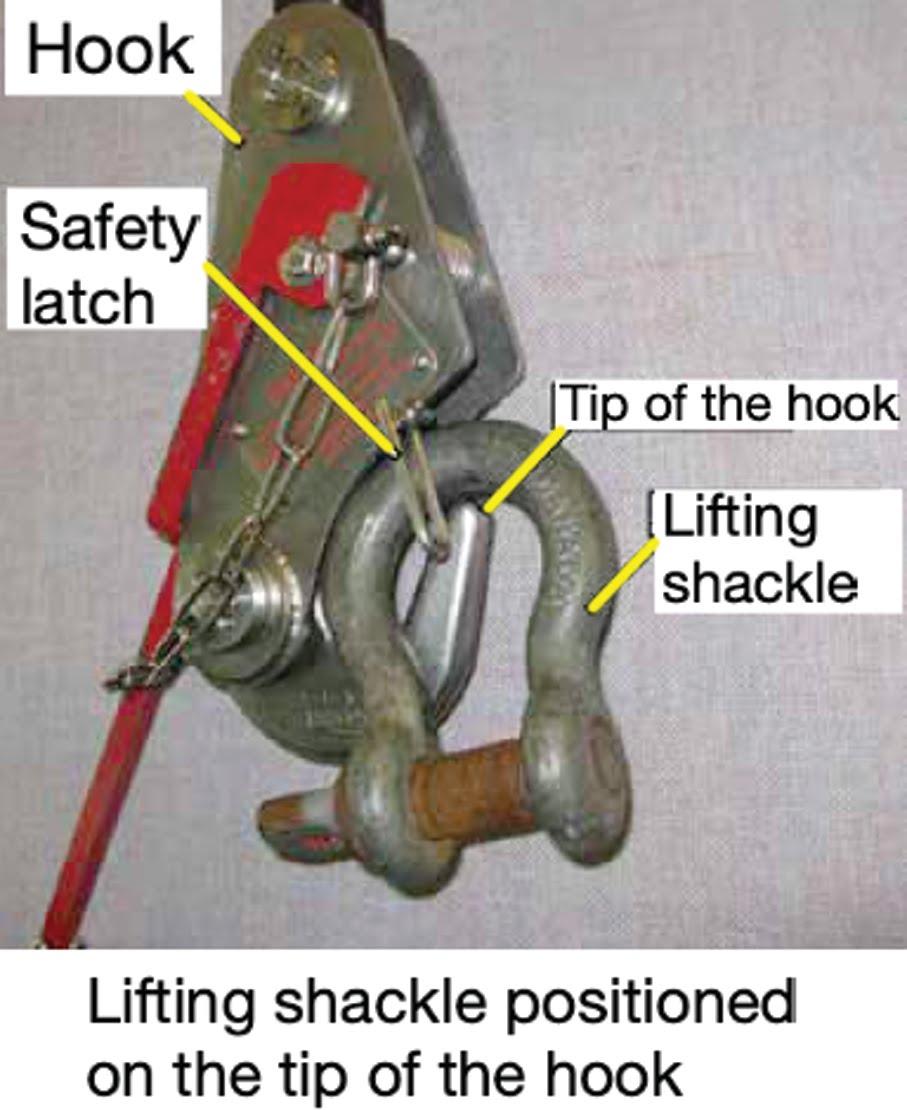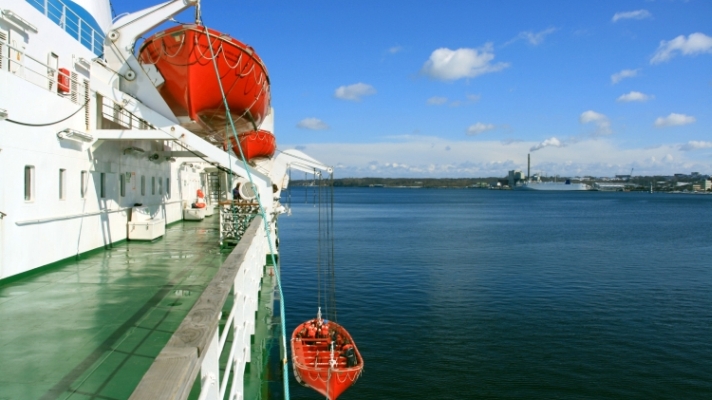Make a point of always checking the safety latches on the hooks of rescue boat davits. An open safety latch recently caused a lifeboat to fall sixteen metres down into the water causing damage to the boat.
The incident was covered by the latest Mars Reports compiled by The Nautical Institute. A transcript of the incident:
 A ferry was at dock for the evening and a technician was on board to troubleshoot a problem with the rescue boat davit. To allow the technician to access the accumulator chamber of the davit, the rescue boat was lowered to the water and the fall slightly slackened. The rescue boat, uncrewed, remained floating in the water while the technician charged the hydraulic accumulator with nitrogen, which took about twenty minutes. During this time, the fall was slack, the lifting shackle and the hook resting on the rescue boat.
A ferry was at dock for the evening and a technician was on board to troubleshoot a problem with the rescue boat davit. To allow the technician to access the accumulator chamber of the davit, the rescue boat was lowered to the water and the fall slightly slackened. The rescue boat, uncrewed, remained floating in the water while the technician charged the hydraulic accumulator with nitrogen, which took about twenty minutes. During this time, the fall was slack, the lifting shackle and the hook resting on the rescue boat.
Once the davit accumulator had been charged, a crew member raised the rescue boat from the water using the davit while an engineer and the technician stood by and observed. From their positions on deck 6, the witnesses could see the rescue boat as it was being raised; however, they could not see how the hook and the lifting shackle were positioned.
The empty rescue boat was raised smoothly and when it was close to the davit’s limit switch, the lifting speed was reduced as per operational practice. The rescue boat jerked slightly due to this change in speed and then plunged into the water, a drop of approximately sixteen metres. The impact from the fall cracked the rescue boat’s fuel tank in two places and caused minor damage to the hull. Some gasoline from the boat’s fuel tank was also released into the environment.
Investigation Findings
- After the incident, inspection of the hook showed that the springloaded safety latch on the hook was bent to one side, creating a gap between the latch and the tip of the hook. It could not be determined when or how the safety latch became bent.
- The investigation also determined that the hook design is such that the lifting shackle can rest on the tip of the hook. The lifting shackle may have become positioned on the tip of the hook when the falls were slack while the rescue boat was floating unmanned in the water, thus creating an opportunity for uncontrolled release.
Lessons Learned
- Whenever lifting gear is left loose, but still connected, the connection should be inspected before restarting the lift.
- Good practice for boat recovery is to lift the craft just high enough out of the water to be free of waves and swell and then verify the connection before completing the lift.
- Make a point of always checking the safety latches on the hooks, if equipped. They play a crucial role in safety.
Mars Reports
This is one of the May Mars Reports, originally published as Mars 201939, that are part of Report Number 320. A selection of this Report has also been published in SWZ|Maritime’s July/August issue.
Submit a Mars Report
More reports are needed to keep the scheme interesting and informative. All reports are read only by the Mars coordinator and are treated in the strictest confidence. To submit a report, please use the Mars report form and send it to mars@nautinst.org.








